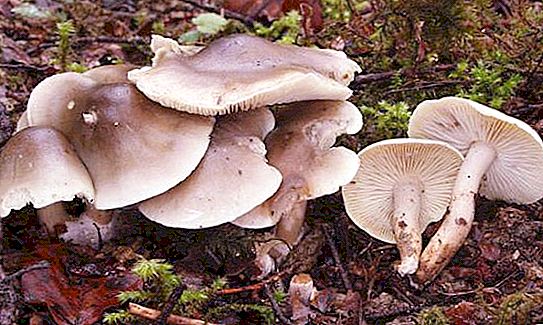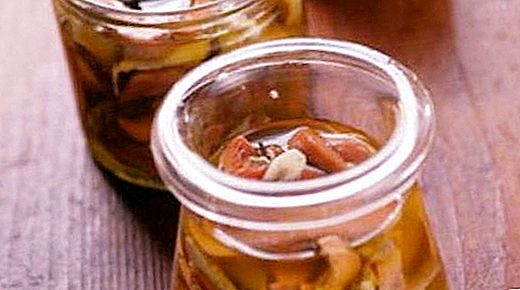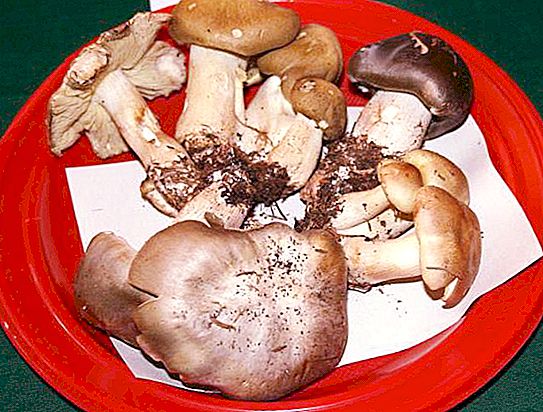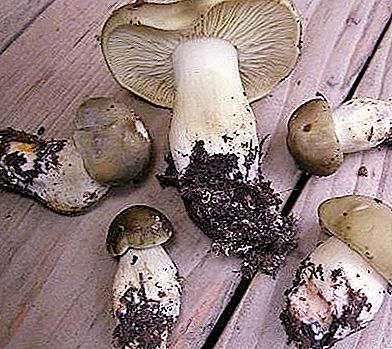Among the many objects that attract the attention of fans of "silent hunting", there is a whole genus of mushrooms, called rows. In total, there are about two dozen edible (and very good taste) varieties. However, they do not include soap rowing, which inexperienced mushroom pickers can grab by mistake in a basket and subsequently regret it. The "enemy" must be known in person! Or be able to determine by smell. Therefore, read on!

Soap mushroom: description
A purely outwardly forest find seems very seductive. Her hat can reach a dozen centimeters in diameter - a real giant. The coloring of the soap row is very diverse. Most often - white and gray with a slight greenish tint. However, the color palette is very wide, it’s easy to stumble upon a “soap box” with a dark gray, almost black hat. In this case, the color becomes slightly lighter towards its edge.
Soap rows - mushrooms whose hats are smooth, with a dull sheen, although especially large specimens may have a scaly, fissured, or felt structure. At the same time, the young mushroom has a flat edge of the cap, and with age it begins to acquire waviness.
The middle of the soap cap is thick and fleshy, the edges can be called sharp, the plates are either white or with a yellowish tint, rare and thin. The flesh has a whitish color, slowly reddens when damaged.
The leg is pale, sometimes covered with dark scales. Most often, it has a cylindrical shape, but in some cases it can expand downward.
Place and time of growth
Soap row - a mushroom is very common and, so to speak, long-lived. The first copies appear in the middle - the end of August, come across in the last days of October. Moreover, the yield is plentiful. They prefer sandy soils, “make friends” with pines and firs, therefore they grow in coniferous, in the extreme case mixed forests with predominance of coniferous species.
About Edibility
Frankly poisonous row soapy call would be unfair. It is almost impossible to poison her with death. But the mushroom has an unpleasant feature: it smells distinctly and brightly with laundry soap. Also by Soviet times. That's why soap edible is considered inedible. There is still a recipe for its preparation: to cook only with other, more pleasant gifts of the forest, to lay in a small pile in small quantities, and boil in three or four waters before salting, mercilessly draining them.

However, it helps a little. Soapy “aroma” is too stable. Some mushroom pickers are even convinced that during cooking it only intensifies.
In addition, there is evidence that the pulp itself is bitter in taste. It is partially eliminated during cooking. But accompanied by a distinct flavor, eating mushrooms is still not a pleasure.
Overdose Signs
If you eat too many soapy rows, nausea and vomiting are guaranteed. It’s better to wander around the forest longer and look for more cute and safe mushrooms. It makes sense to eat "soap dishes" only when surviving in the wild for stray tourists. In more civilized conditions, mushroom pickers ignore this variety.

Alternative use
But from the point of view of medicine and pharmacology, soap mushrooms have very interesting and promising properties. Studies have shown that their flesh contains a number of polysaccharides exhibiting antitumor properties. There is evidence that sarcoma with soapweed extract is suppressed by 70 percent, and Ehrlich carcinoma by 60%.
In addition, soap row, as it turned out, is able to have a powerful antioxidant effect and resist some pathogenic bacteria. So, maybe, the mushroom will find its application in official medicine.





